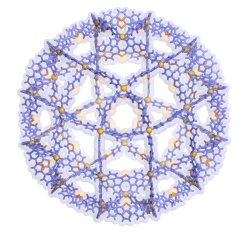Résumé
Size plays a crucial role in host-guest chemistry. In the early days, crown ethers and macrocyclic hosts identified metal ions and small molecules within their cavities. However, due to size constraints—typically, <200 ų cavity volume—these synthetic hosts could mostly recognize a single small molecule, rarely exhibiting unique properties. Since the mid-90s, we and others (Rebek, Raymond) have developed larger, three-dimensionally closed cavities by harnessing the principle of molecular self-assembly. The M6L4 cage with an octahedral shape is one of the most effective self-assembled hosts, offering a molecular recognition site with an approximate cavity volume of 450 ų. The cavity, surrounded by four hydrophobic and electron-accepting ligands, effectively accommodates multiple guest molecules, forming conformationally fixed guest aggregates that enable new reactions and functions. Recently, we successfully built an expanded M9L6 cage (cavity volume >1500 ų) using the same components, while maintaining the strong guest-binding abilities of the M6L4 cage. This cage can fully encapsulate medium-sized molecules (M.W. 1000–2000), which are of particular interest in pharmaceuticals. Self-assembly of MnL2n gigantic cages (n = 12, 24, 30, 48; Figure 1) as well as protein encapsulation within the M12L24 cages will also be discussed in this talk.

